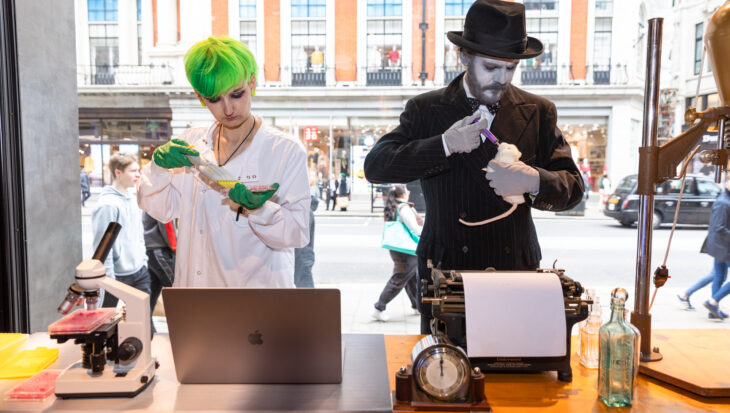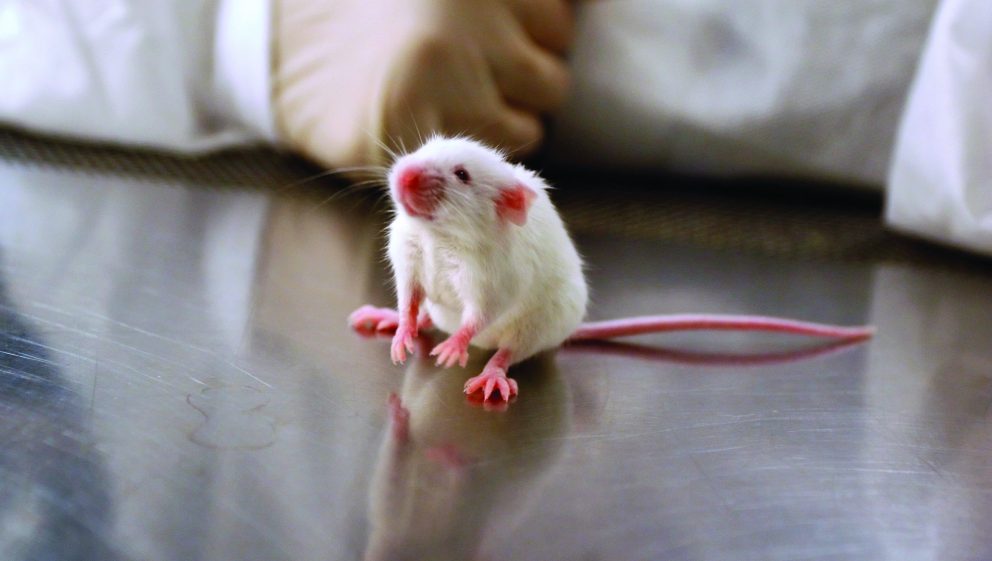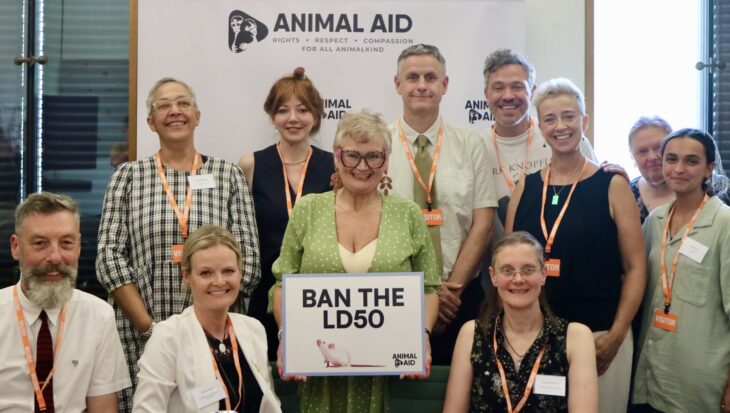The stitching together of mice was carried out in the United States, and reported in a paper published in 2012. This mentions that the research was ‘supported in part by grants’ from various organisations, including the UK Multiple Sclerosis Society.
The experiments were designed to see whether stitching younger and older mice together helped to reverse damage to myelin – the substance that protects nerves and is destroyed by Multiple Sclerosis (MS). Three weeks after the mice were stitched together, the older animal received an injection of toxin into their spinal cord, in order to damage it. The animals remained stitched together until they were both killed.
The gruesome details of how mice are stitched together are described in an earlier paper. This explains that the animals are attached to one another at joints on their front and back legs, and also connected by a flap of skin along their side, which is stitched or stapled.
Further research exposed by Animal Aid was carried out in the UK and published in 2013. This involved toxin being injected into the brains of mice in order to damage them. The animals were killed at various time points so that their brains could be analysed, and the researchers also examined brain slices taken from new-born mice. This research was designed to understand how myelin (the substance that protects nerves) is replaced if it is destroyed. Two researchers listed on the paper were funded by the Multiple Sclerosis Society, and one of them co-authored the paper about the experiments that involved mice being stitched together.
Animal Aid argues that all these experiments were scientifically useless as well as cruel, since the results have no relevance to human sufferers of MS.
Says Jessamy Korotoga, Anti-vivisection Campaign Manager at Animal Aid:
‘These nightmarish research papers make truly harrowing reading; the suffering these poor mice underwent is unimaginable. All the more dreadful is the fact that this research is of no value to humans – MS has been described as a “uniquely human disease”. Damaging and harming animals in this way is archaic and unnecessary. I urge the Multiple Sclerosis Society to ensure that their grants, and the donations of their supporters, are used for humane research, not outdated and barbaric animal research’.
Editors’ notes
- The paper involving the mice being stitched together is: Ruckh, J.M. et al (2012) ‘Rejuvenation of Regeneration in the Aging Central Nervous System’, Cell Stem Cell, vol.10, pp. 96-103.
- The procedure describing the joining of the mice is in: Wright, D. E. et al (2001) ‘Physiological Migration of Hematopoietic Stem and Progenitor Cells’, Science, 294, issue, 5548, pp.1933-1936
- The paper involving toxin being injected into the brains of mice is: Miron, V.E. et al (2013) ‘M2 microglia/macrophages drive oligodendrocyte differentiation during CNS remyelination’, Nature Neuroscience, vol. 16, no.9, pp.1211-1218
- For more information about Animal Aid’s campaign against charity-supported animal experiments, please visit: victimsofcharity.org
- For more information or interviews, please contact 01732 364 546.


